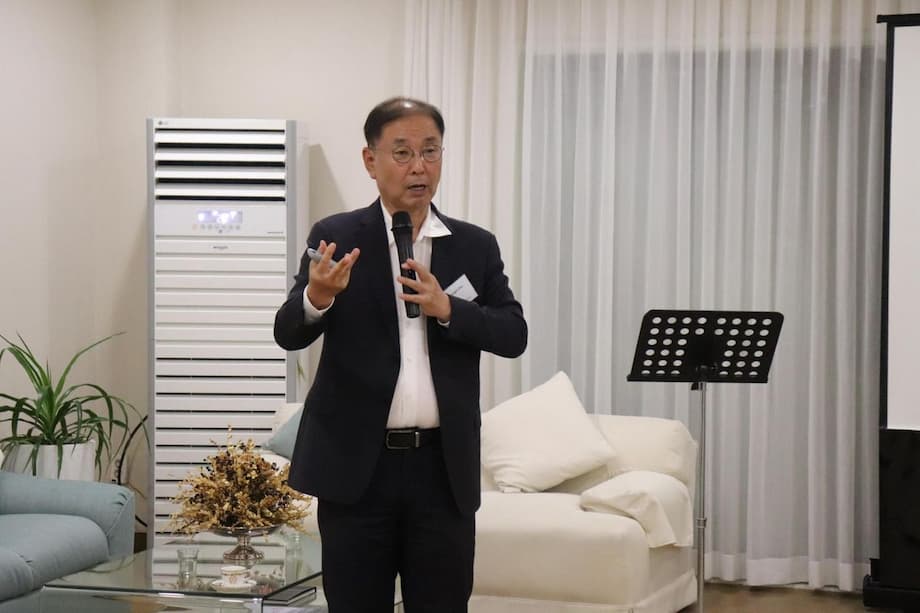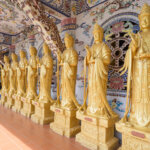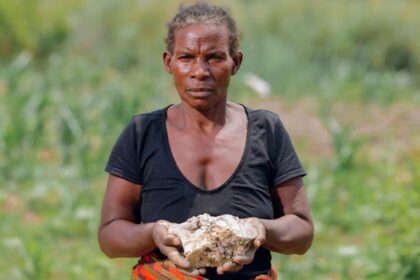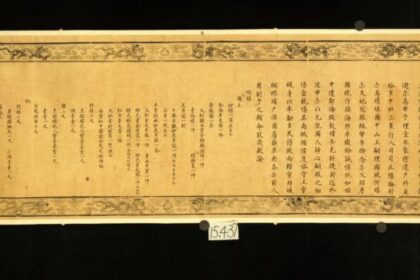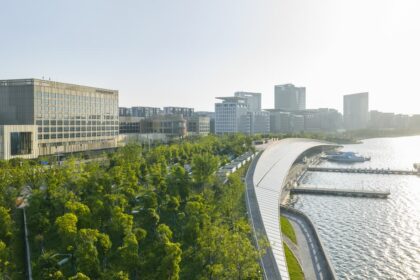Cho Chung-il’s Vision: Blending Tradition and Modernity in Korea’s Largest Hanok Resort
In the rolling mountains of Yeongwol County, Gangwon Province, a remarkable transformation is underway. At the heart of this change is Cho Chung-il, chairperson of Hanok Heritage and CEO of fintech company KONA I, who has set out to redefine what it means to preserve and celebrate Korean tradition. His ambitious project—the creation of Korea’s largest hanok resort—seeks not only to protect the country’s architectural legacy but also to reimagine it for a new era of luxury hospitality and cultural tourism.
- Cho Chung-il’s Vision: Blending Tradition and Modernity in Korea’s Largest Hanok Resort
- What Makes a Hanok? Understanding Korea’s Architectural Heritage
- Inside the Hanok Heritage Resort: Luxury, Wellness, and Cultural Immersion
- Redefining Cultural Tourism: A New Model for Heritage Preservation
- The Broader Context: Rising Interest in Korean Heritage
- International Recognition and Future Plans
- In Summary
Hanok, the traditional Korean wooden house, has long been a symbol of harmony with nature, craftsmanship, and understated elegance. Yet, as Korea has modernized, these historic structures have often been overlooked or relegated to museums and tourist villages. Cho’s vision is to change that narrative, making hanok relevant and desirable for contemporary lifestyles while preserving their unique cultural value.
What Makes a Hanok? Understanding Korea’s Architectural Heritage
To appreciate the significance of Cho Chung-il’s project, it’s important to understand what sets hanok apart. Hanok are characterized by their use of natural materials—wood, stone, clay, and hanji (traditional paper)—and their design principles, which emphasize balance with the surrounding environment. Features such as curved tiled roofs, wooden beams joined without nails, and ondol (underfloor heating) systems reflect centuries of adaptation to Korea’s climate and culture.
Historically, hanok were not just homes but expressions of philosophical ideals. Their orientation, layout, and materials were chosen to foster well-being, community, and respect for nature. However, these same features have posed challenges in the modern era, with issues like insulation, maintenance, and comfort often cited as barriers to wider adoption.
Preservation Meets Innovation
Cho’s approach to the Hanok Heritage resort is both respectful of tradition and boldly innovative. The resort’s design retains the authentic characteristics of hanok construction, including traditional wood joinery and signature rooflines. Yet, it also addresses common complaints—such as musty smells and draftiness—by employing advanced wood-drying technology and modern materials where appropriate. For example, hanji windows have been replaced with tempered glass and near-invisible fly screens, ensuring comfort without sacrificing aesthetics.
The result is a seamless blend of old and new: a space that feels both timeless and contemporary, inviting guests to experience the essence of hanok living without compromise.
Inside the Hanok Heritage Resort: Luxury, Wellness, and Cultural Immersion
The Hanok Heritage House is more than just a hotel—it’s a sprawling sanctuary of culture, wellness, and luxury. The $130 million project covers a vast 337,190 square meter plot nestled in the mountains, offering seclusion and tranquility far from the bustle of city life. Currently, three hanok units are in operation, each averaging 750 square meters and featuring private saunas, gardens or terraces, and interiors crafted from the finest pine timbers.
Cho Chung-il describes his goal succinctly:
The aim is a physical space that is as cozy as possible.
This philosophy is evident in every detail, from the spacious layouts to the integration of wellness programs such as the Sound Bath—a meditative experience combining soothing sounds with dessert tasting. The resort’s focus on healing and relaxation is designed to appeal to both domestic and international travelers seeking respite and rejuvenation.
By 2027, the complex will include 18 to 30 hanok units, with half reserved for members-only stays and the remainder operating as a luxury hotel. This dual approach allows for exclusivity while also making the hanok experience accessible to a broader audience.
Craftsmanship and Technology: The Secret to Longevity
One of the most remarkable aspects of the Hanok Heritage project is its commitment to craftsmanship. Cho has worked closely with master carpenters, employing a unique wood-drying process that takes seven years to complete. This painstaking method not only preserves the wood’s natural beauty but also ensures durability and resistance to the elements—a crucial factor in maintaining the integrity of hanok structures over time.
At the same time, Cho’s background in technology (as CEO of KONA I, a leader in smart card solutions) informs the resort’s embrace of modern amenities. From climate control to security systems, the resort integrates cutting-edge solutions that enhance comfort without detracting from the traditional atmosphere.
Redefining Cultural Tourism: A New Model for Heritage Preservation
Cho Chung-il’s hanok resort is more than a business venture—it’s a statement about the future of cultural preservation in Korea. By demonstrating that traditional architecture can be adapted to meet the demands of modern hospitality, Cho is challenging the notion that heritage and progress are mutually exclusive.
During a recent forum hosted by the Council for Inclusive Capitalism with the Vatican at the Italian ambassador’s residence in Seoul, Cho outlined his vision for the project. The event brought together cultural leaders and diplomats to discuss innovative approaches to heritage preservation, highlighting the international interest in Korea’s architectural legacy.
Cho’s philosophy goes beyond simple restoration. He aims to create living examples of hanok that serve contemporary needs, inspiring both Koreans and visitors from around the world to appreciate the beauty and practicality of traditional design. This approach has attracted attention from cultural organizations seeking sustainable models for heritage tourism, and plans are already underway to expand the Hanok Heritage concept to cities like New York and Paris.
Empowering Identity and Global Dialogue
For Cho, the hanok is more than a building—it’s a symbol of Korean identity and a bridge to global cultural dialogue. As he explained in an interview featured in Noblesse magazine,
Hanok is a space where nature and people coexist in harmony. I hope that Korea’s hanok will shine as a treasured cultural asset for the next 1,000 years.
This vision is reflected in the resort’s design, which emphasizes harmony with the natural landscape and the creation of spaces that foster reflection, connection, and well-being.
The Broader Context: Rising Interest in Korean Heritage
The launch of the Hanok Heritage resort comes at a time of growing interest in Korean culture, both at home and abroad. The National Museum of Korea, for example, is on track to set a new record for annual visitors, reflecting a surge in public engagement with the country’s history and traditions. Cultural festivals, such as the upcoming arts and culture event in Yongsan District, further underscore the vibrancy of Korea’s creative scene.
This renewed appreciation for heritage is not limited to museums and festivals. Across the country, there is a movement to revitalize traditional crafts, foods, and architecture, driven by a desire to balance modernization with the preservation of cultural identity. The Hanok Heritage resort stands at the forefront of this movement, offering a tangible example of how the past can inform and enrich the present.
Challenges and Opportunities
Despite its success, the project faces challenges. Building and maintaining hanok on a large scale requires significant investment, skilled labor, and ongoing maintenance. There are also questions about how to balance exclusivity with accessibility, ensuring that the benefits of cultural preservation are shared widely.
Nevertheless, Cho’s leadership and vision have positioned the Hanok Heritage resort as a model for others to follow. By combining authenticity with innovation, the project demonstrates that tradition can be a source of inspiration and growth, rather than a constraint.
International Recognition and Future Plans
The international community has taken notice of Cho Chung-il’s efforts. The CICI forum, held at the Italian ambassador’s residence, served as a platform for discussing the global significance of hanok and the potential for cross-cultural exchange. Diplomats, cultural leaders, and business executives have praised the project for its creativity and impact.
Looking ahead, Cho plans to expand the Hanok Heritage brand beyond Korea’s borders, with projects in New York and Paris under consideration. These initiatives aim to introduce the hanok experience to new audiences, fostering greater understanding and appreciation of Korean culture worldwide.
Legacy and Inspiration
Ultimately, the story of Cho Chung-il and the Hanok Heritage resort is one of vision, perseverance, and a deep respect for tradition. By reimagining the hanok for the 21st century, Cho is not only preserving a vital part of Korea’s heritage but also inspiring others to see the value in their own cultural legacies.
As Korea continues to evolve, projects like the Hanok Heritage resort offer a blueprint for how the past and present can coexist—enriching lives, strengthening communities, and building bridges across cultures.
In Summary
- Cho Chung-il, chairperson of Hanok Heritage and CEO of KONA I, is leading the development of Korea’s largest hanok resort in Yeongwol County.
- The resort blends traditional Korean architecture with modern luxury and wellness, addressing common challenges of hanok living through innovative technology and craftsmanship.
- The project aims to preserve and revitalize hanok as a living tradition, making it accessible and appealing to contemporary audiences.
- International interest in the resort highlights the global significance of Korean cultural heritage and the potential for cross-cultural exchange.
- Cho’s vision serves as a model for sustainable heritage preservation, demonstrating that tradition and innovation can coexist to create meaningful experiences for future generations.


